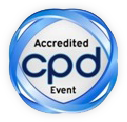
Isaia Sotiriadou
University of Cologne, Germany
Title: Short overview of optimized investigation procedure for the detection of waterborne parasites involving loop mediated isothermal amplification (LAMP)
Biography
Biography: Isaia Sotiriadou
Abstract
There is an ongoing demand for the development of different molecular tools with the aim of realizing an efficient method that is simple, fast and economic for the effective detection of life threatening microorganisms in water. In principle, the loop mediated isothermal amplification (LAMP) has been advocated as a unique, easy and low cost genetic analysis tool for resource-poor settings with increased sensitivity and specificity for the accurate detection of human pathogenic waterborne protozoan in the field or at the point of care by clinicians. LAMP has been successfully applied for several taxa including Cryptosporidium spp., Toxoplasma gondii, Giardia duodenalis, Entamoeba histolytica and matrices like stool, blood, tissues and environmental samples. Here, we demonstrate the most significant waterborne parasites that are detectable using LAMP. A unified strategy showing the investigation procedure comprises of sample collection, purification, segmentation and molecular analysis will be presented, as well as the advantages and disadvantages of LAMP assay in comparison to PCR assay. The synergy of using this innovative and rapid assay indicates the important impact in the event of outbreaks caused by life threatening pathogens and for tracking the source of contamination. The combination of the LAMP together with the already existing PCR, and the sequencing and genotyping of the end product, provides valuable information to scientists and physicians for prevention, safety and the health of the population. LAMP assay is valuable for medical outcomes (diagnoses), for tracking the source of infections and for monitoring purposes. Its economic importance is also significant for the detection of parasites at the earliest possible stage in the field.

